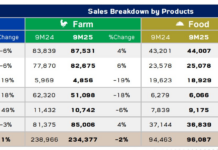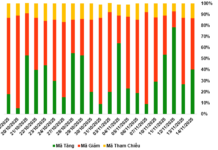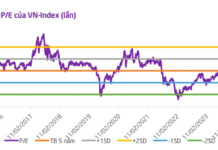
This update was shared by Mr. Nguyen Duc Len, Deputy Director of the State Bank of Vietnam (SBV), Ho Chi Minh City Branch.
Mr. Len revealed that the highest proportion of consumer credit was for purchasing, leasing, and constructing or repairing houses for living purposes. Analyzing consumer credit by purpose, loans for purchasing houses for living, leasing, lease-purchasing, constructing or repairing houses, and receiving land-use right transfers for building houses accounted for VND 660 trillion, the highest proportion of total consumer credit in the city, at 61.7%.
Consumer credit for life purposes, including purchasing household goods and appliances, experienced the highest growth. Currently, outstanding loans for buying household goods and appliances exceed VND 145 trillion, accounting for 13.6% of total consumer credit; an increase of 25% compared to the end of the year and a surge of 46.5% from the same period last year. In contrast, loans for purchasing or leasing vehicles decreased by 21.3% compared to the end of 2023.
According to Mr. Len’s assessment, the demand for consumer credit has been on an upward trend in recent months, coinciding with the economic growth trajectory. Socio-economic factors are the primary drivers of consumer credit growth, both generally and specifically in the city. Notably, the group of loans for purchasing houses has witnessed a positive growth trend over the past three months, with the highest growth rate in October 2024, at 1.3%. As this group holds the highest proportion, its positive growth significantly contributes to the expansion of consumer credit. Additionally, the demand for consumer loans for life purposes, such as purchasing household appliances and utilizing credit card benefits, also positively influences consumer credit growth in the city.
The consumer credit activities of credit institutions have significantly contributed to improving the lives and well-being of the people and carry great social significance. They help enhance the quality of life and ensure social welfare, effectively combat loan sharks, and maintain social order. From a business management perspective, the growth and expansion of consumer credit stimulate consumption and production, thereby promoting economic growth and expanding business operations and consumption on a larger scale. Given the significant room for growth in consumer credit, this sector will undoubtedly continue to contribute to the economy’s growth and development in the coming time.
Unlocking the Potential of Vietnam’s High-Speed Railway: Why Not Extend from Lang Son to Ca Mau?
The government has submitted a report to the National Assembly providing explanations on opinions regarding the investment policy for the high-speed North-South railway project, including a proposal to extend the project from Lang Son to Ca Mau.
‘Leaping into a New Era’: Ho Chi Minh City Aims for a Per Capita Income of $13,000 per Year
To enter a new era, Ho Chi Minh City needs to quantify and select the most important indicators. In particular, the city must achieve an average income of approximately $13,000 per capita per year in the next five years to meet the standards of developed countries. This ambitious goal sets a challenging yet achievable target for Vietnam’s economic hub, reflecting a commitment to progress and a desire to elevate the city’s standing on a global scale.
Establishing Three Wards Within One District: A Strategic Move for Ho Chi Minh City’s Future Growth and Development
“This district has the unique distinction of being the only one in Ho Chi Minh City to establish a ward. Following the reorganization, the number of administrative units at the commune level will decrease from 16 to 10, a significant change for the district.”
The Slow Progress of Dong Nai’s Key Projects
Despite efforts to accelerate development, key infrastructure projects in the province of Dong Nai have been consistently delayed. Among these projects, one has fallen behind schedule by 500 days, while another faces the challenge of completing a bridge over a river without the necessary connecting roads.










































